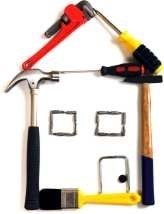
Technology has a way of leading us to believe that we should be thinking more about the process than the end result. A team of engineers needed to measure the height of a flagpole. They only had a tape, and were getting frustrated trying to keep the tape alongside the flagpole. It kept flopping down.
An accountant happens by to whom they explain the complexity of their project. The accountant pulls the pole from the ground, lays it down, measures it, then leaves. "Just like an accountant!" complains one engineer. "We need to know the height and he gives us the length!"
Measure a capital reserve fund as though it's for maintenance and you get one answer. Measure it by whether it enhances value and you could get quite another. Which is the right answer? The value method, of course.
After all, owning real estate property is all about value and its appreciation. Taking care of it is simply the process by which you make sure your property is seeing the appreciation it should.
Properties Can Stagnate
Present market conditions notwithstanding, the long-term experience has been that real property increases in value. But if people view reserves as maintenance, it seems to me that that can lead to a management mode that permits a property to stagnate. If a reserve fund is seen as a maintenance fund the temptation arises to "save money" by cutting back on "maintenance," in effect cutting back on the contribution to reserves.
But skimping on reserves is like teaming up with depreciation. Deferring reserves invites losing two ways. It always costs more to catch up on depreciated property later on, plus you lose on value appreciation in the meantime.
It seems to me the correct way to understand contribution to a reserve fund is to think of it as an investment in the future. Every value has a cost. You need to invest in order to realize appreciation. But like any investment, you have to know when to hold 'em and when to play 'em.
Building siding may be a good example. An association can spend a significant portion of its budget on replacing split, warped and water damaged siding on a never-ending maintenance cycle. There may be a structural ventilation problem that's inducing the paint film to fail prematurely.
Non-Stop Expenses
There always seem to be some buildings that look "tired" because they are at the tail end of the maintenance line. The non-stop expenses for maintaining the siding simply replaces in kind. It's like treading water.
The board has two choices. It can go on spending money on maintaining the siding. Or it can invest in a project that strips off the existing siding and replaces it with a non-wood product that leaves maintenance behind.
As part of its due diligence, it will need to analyze the potential return on investment — when it will begin to pay off and how much. The board should satisfy itself that there are no latent moisture issues within the building envelope. It might even make sense to investigate the potential energy cost savings of improved insulation of the exterior wall assembly once the old siding has been removed.
Maintenance Increases Value
This could easily mean a special assessment. But here's the key point. The board has re-defined siding replacement from maintenance to value enhancement. It's selling the project on the basis that this is an opportunity for homeowners to invest in their property. The expenses for perennial upkeep will tail off; the appearance of the buildings will be instantly noticeable improving curb appeal and perceived market value, not to mention pride of ownership.
Now in all fairness, perhaps the siding on your buildings is not the place to look for enhancing value. Maybe it's decks or pavements. Wherever the opportunity lies, thinking of capital reserve funds in terms of value enhancement instead of maintenance is, in my opinion, the preferred management mode.



Leave a Comment